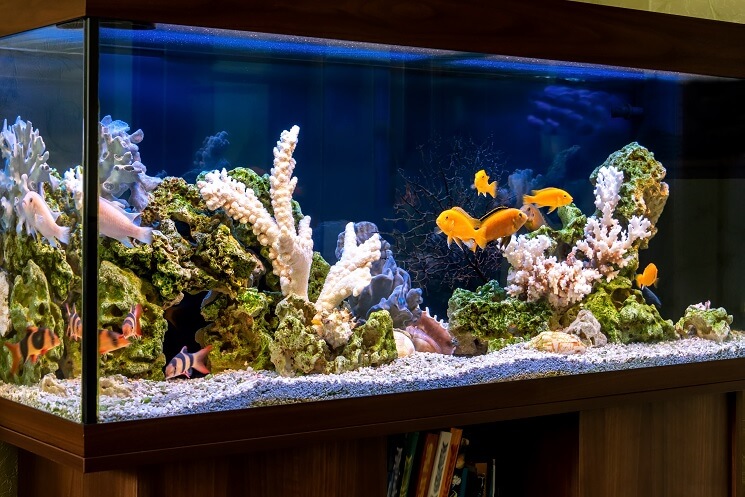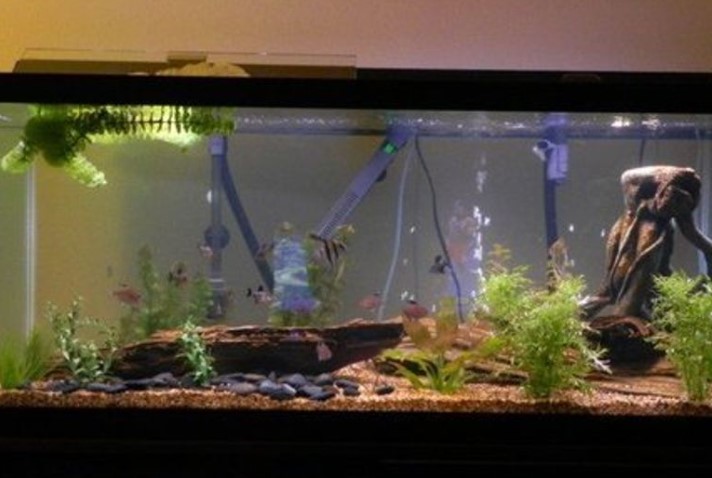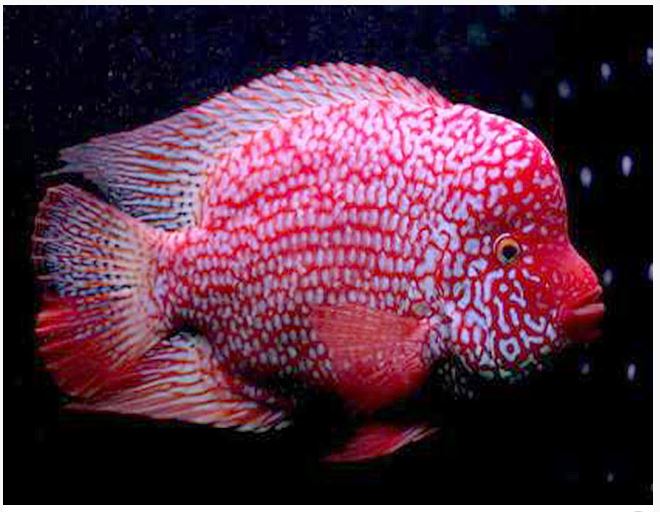How Long Do Acrylic Aquariums Last? Discover Their Lifespan Now!
Acrylic aquariums typically last around 20 years with proper maintenance. Acrylic aquariums are popular because of their strength and clarity, but the question of how long they last remains.
If you are considering purchasing an acrylic aquarium, it is important to know its lifespan. Unlike glass aquariums, acrylic aquariums are less likely to break or crack. They are also lighter, making them easier to move. However, they can scratch more easily and require more maintenance to keep them looking clear.
In this article, we will give you a breakdown of what to expect when it comes to the lifespan of an acrylic aquarium. We’ll cover everything you need to know, from how to care for it to common problems that can shorten its lifespan.

Credit: www.acrylicpedia.com
Factors That Affect The Lifespan Of Acrylic Aquariums
Acrylic aquariums are a popular choice for aquatic enthusiasts due to their clarity, strength, and lightweight nature. However, the lifespan of these aquariums can vary significantly due to various factors. In this blog post, we will discuss the key factors that affect the lifespan of acrylic aquariums.
Thickness Of Acrylic
The thickness of the acrylic used in an aquarium plays a significant role in its lifespan. Generally, the thicker the acrylic, the longer the lifespan of the aquarium. Thicker acrylic is less likely to crack or break and can withstand greater pressure.
A thicker acrylic aquarium also provides better insulation, which means that less heat is lost, and less stress is placed on the aquarium’s material.
Quality Of Acrylic
The quality of the acrylic used in an aquarium also plays a vital role in the aquarium’s lifespan. Some acrylic materials can deteriorate quickly, leading to cracks and leaks. High-quality acrylic is more resistant to damage and can endure wear and tear from regular use.
When purchasing an acrylic aquarium, always choose a reputable brand and ensure that the acrylic used is of the highest quality.
Exposure To Sunlight
Exposure to direct sunlight can cause acrylic to deteriorate and become brittle, leading to cracks and leaks. It’s important to place your aquarium in a shaded area or use a cover to protect it from direct sunlight.
Temperature Changes
Temperature changes can cause acrylic to expand or contract, leading to stress on the material. Rapid temperature changes, such as moving the aquarium from a warm room to a cold room, can cause significant stress on the material and lead to cracks and leaks.
Try to keep your aquarium in a stable environment and avoid extreme temperature changes.
Cleaning Frequency
Regular cleaning of your acrylic aquarium is essential to maintain its lifespan. However, excessive cleaning can also cause damage. It’s best to clean your aquarium regularly but avoid using harsh chemicals or abrasive materials that can scratch the surface of the acrylic.
The lifespan of acrylic aquariums can vary due to several factors. By considering the thickness and quality of the acrylic, avoiding exposure to direct sunlight, keeping the aquarium in a stable environment, and cleaning it regularly, you can maximize the lifespan of your acrylic aquarium.
Understanding Acrylic As A Material For Aquariums
Acrylic aquariums are becoming a popular choice for aquarium enthusiasts due to their elegant design and durability. Understanding acrylic as a material for aquariums is important because it plays an essential role in ensuring the fish and plants inside the aquarium thrive.
Properties Of Acrylic
Acrylic is a type of thermoplastic that is lightweight, shatterproof and has excellent optical clarity.
- It is 17 times stronger and only half the weight of glass, which makes it easy to handle and maneuver.
- It can withstand a wide range of temperatures without losing its physical properties or being affected by uv radiation, making it ideal for aquarium use.
- Acrylic allows more light to pass through the surface compared to glass, providing better clarity, resulting in better visualization of aquatic life.
Advantages Of Using Acrylic For Aquariums
Acrylic aquariums offer several benefits over traditional glass aquariums.
- Acrylic is more shatterproof than glass and less likely to break, which is an important safety feature when dealing with large volumes of water.
- It is more resistant to scratches and impacts compared to glass, resulting in a clearer and better-looking aquarium over time.
- Acrylic is much lighter than glass, allowing for larger and more elaborate aquarium setups without the need for additional support structures.
- It allows for more customizable shapes, which can create more attractive and distinctive aquarium designs.
Disadvantages Of Using Acrylic For Aquariums
Despite having many advantages, acrylic aquariums have some limitations as well.
- Acrylic can be more expensive than traditional glass aquariums, although the price can vary depending on the manufacturer and the size of the aquarium.
- Acrylic is more prone to scratching, so it’s essential to take preventative measures such as avoiding harsh cleaning solutions and using specialized cleaning products.
- Acrylic has a lower thermal conductivity than glass, which means it doesn’t absorb heat as effectively. Thus, less heat is required to keep the aquarium warm, but overheating can occur if the aquarium is in direct sunlight and not adequately cooled.
Acrylic is an excellent material for aquariums. It is an excellent choice for customization, durability, and overall aesthetics. However, it’s essential to keep in mind that it may come with a few limitations and maintenance requirements. But when done right, an acrylic aquarium can be a beautiful addition to any home or office space.
Caring For Your Acrylic Aquarium To Prolong Its Lifespan
Acrylic aquariums are a popular alternative to glass tanks due to their durability, clarity, and lightweight. But like any other aquarium, they require proper care and maintenance to ensure their longevity.
Cleaning Do’S And Don’Ts
Regular cleaning is necessary to keep the acrylic aquarium looking new and prolong its lifespan. However, specific cleaning techniques and materials should be avoided to prevent scratches or cloudiness on the surface.
Here are some cleaning do’s and don’ts to follow:
- Do use a soft cloth or sponge and warm, soapy water to wipe the walls and interior surfaces.
- Do rinse the tank with clean water and dry it with a soft towel.
- Do not use abrasive materials, such as scrub brushes or pads, to clean the tank surfaces.
- Do not use ammonia-based or alcohol-based cleaners, as they can damage the acrylic surface.
- Do not use paper towels or other rough materials to dry the tank, as they can scratch the surface.
Seasonal Maintenance
Apart from regular cleaning, some seasonal maintenance is necessary to maintain the acrylic aquarium’s quality. It’s crucial to do these tasks at the right time to prevent damage to the tank.
Here are some seasonal maintenance tasks to follow:
- Spring: Check and clean the aquarium filter, replace any worn-out parts, and prevent algae growth.
- Summer: Monitor the water temperature and keep it within the recommended range for the fish species.
- Fall: Prepare the aquarium for the colder season by insulating it against cold drafts and maintaining the water temperature.
- Winter: Avoid exposing the tank to extreme temperatures or dry air, as it can cause stress to the fish and damage to the acrylic.
Proper Placement To Avoid Direct Sunlight
The placement of the acrylic aquarium is crucial to maintain its quality and durability. Exposure to direct sunlight can cause the tank to overheat and damage the acrylic surface, leading to yellowing or cloudiness.
Here are some tips on proper placement to avoid direct sunlight:
- Place the tank away from direct sunlight and heat sources such as radiators or air conditioners.
- Use a tank cover or canopy to provide shade and prevent heat buildup.
- If the tank must be placed near a window, use curtains or blinds to block the sunlight and adjust the temperature.
Temperature Control Tips
Maintaining the proper water temperature is crucial for the health of the aquarium inhabitants and the longevity of the acrylic tank. Fluctuations in temperature can cause thermal shock, which can damage the tank and harm the fish.
Here are some temperature control tips to follow:
- Use a thermometer to monitor the water temperature and keep it within the recommended range for the fish species.
- Use a heater to maintain a consistent water temperature, especially during colder seasons.
- Avoid sudden changes in temperature by acclimating new fish properly and adjusting the temperature gradually.
By following these caring tips, you can prolong the lifespan of the acrylic aquarium and enjoy the beauty of your aquatic pets for years to come.
Signs That Your Acrylic Aquarium Is Aging And May Need Replacement Soon
Acrylic aquariums are a popular choice among hobbyists due to their durability, clarity and lightweight nature. While they are built to last for many years, they are not invincible. Over time, acrylic aquariums can start to show signs of aging, which could indicate that it is time for a replacement.
We’ll look at some of the tell-tale signs that your acrylic aquarium is aging and may need replacing soon.
Scratches Or Cloudy Appearance
Scratches may occur on the surface of an acrylic aquarium over time due to cleaning or accidental damage caused by décor, which can result in a cloudy appearance. Although minor scratches may not compromise the functionality of the aquarium, deep scratches can weaken the structure and potentially lead to water leaking from the tank.
If the scratches become too many or too deep, it may be time to consider replacing your aquarium.
- Light scratches can be removed with acrylic scratch removers, which can help return the acrylic to its original clarity.
- Sanding the acrylic surface that is lightly scratched with a fine grit sandpaper can also help to make the scratches less visible.
Discoloration
Acrylic aquariums come in different colors. As acrylic ages, it may start to develop discoloration, due to algae buildup, water stains, and other environmental factors. Discoloration doesn’t necessarily mean that the aquarium needs replacing unless it is too severe to fix.
- Discoloration can be addressed through cleaning with the right cleaners and procedures.
- A new coat of paint or a more extensive cleaning process may be necessary if the discoloration is too severe.
Leaks Or Cracks
Leaks and cracks are obvious signs that an acrylic aquarium is aging and needs urgent replacement. Any crack in an acrylic aquarium, even a small one, could result in a catastrophic water leak that could damage your floors, equipment, and livestock.
Most of the time, leaks and cracks occur due to improper installation, accidental damage, or aging.
- A patch can be used to temporarily fix a leak that hasn’t gone through the entire thickness of the acrylic, but a replacement is still necessary.
- If the leak or crack has gone through the entire thickness of the acrylic, it’s time for a complete replacement.
Warping Or Bending
Over time, acrylic aquariums can start to warp or bend due to changes in temperature or pressure, which can weaken the structure of the tank. Warping or bending sometimes creates an uneven surface or prevents the acrylic from coupling securely with components such as lids.
- Warping can be a gradual process that’s hard to notice, but it can be detected using water level markers.
- A complete replacement is necessary if the warp or bendings significantly affect the aquarium’s structural integrity.
It’s important to pay attention to signs that your acrylic aquarium is aging and may need replacement soon. Scratches or a cloudy appearance, discoloration, leaks or cracks, and warping or bending are all warning signs that your acrylic aquarium may need replacing.
However, if you take care of your acrylic aquarium properly, it could last you for many years providing a beautiful, clear view of your fish and plants.
Frequently Asked Questions For How Long Do Acrylic Aquariums Last
How Long Do Acrylic Aquariums Last?
Acrylic aquariums can last up to 20-30 years if properly maintained.
What Is The Lifespan Of A Glass Aquarium?
A well-maintained glass aquarium can last for decades, up to 30-40 years.
Are Acrylic Aquariums Better Than Glass?
Acrylic aquariums are better than glass because of their strength, clarity, and longevity.
How Often Do I Need To Replace My Aquarium?
You don’t need to replace your aquarium unless it is damaged beyond repair or has leaks.
Conclusion
Thus, it’s no secret that acrylic aquariums are in high demand, and for a good reason. They are durable, lightweight, and come in various shapes and sizes. However, just like any good thing, they do not last forever. To extend an acrylic aquarium’s lifespan, proper maintenance must be observed, and the acrylic must be handled with care.
Acrylic aquariums may last up to twenty years or longer, depending on the type of care they receive and the quality of the acrylic. It is crucial to remember that they should be cleaned regularly, kept away from sharp objects, and be kept in a stable environment to ensure longevity.
Acrylic aquariums are a great investment, but it is essential to keep in mind that they will eventually need replacement. When the time comes, it is advisable to consult an expert to ensure proper disposal and avoid environmental harm.






